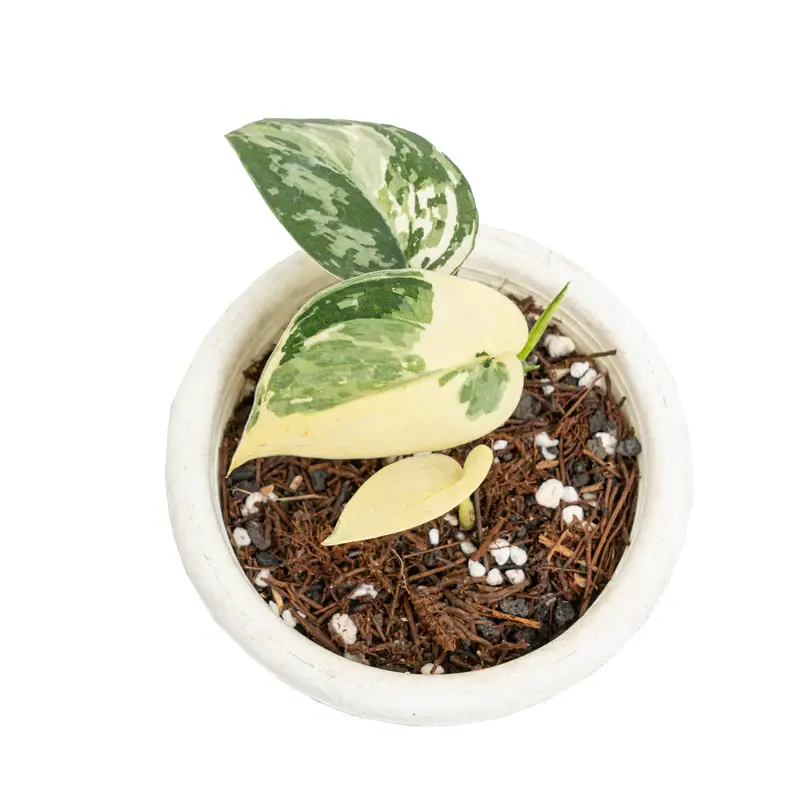Unraveling the Mystery of Variegation: Causes, Stability, and Tips for Increasing Variegation in Aroids
- Shawn Asbury
- Nov 27, 2024
- 3 min read
Variegated plants have taken the plant world by storm, capturing the hearts of enthusiasts and collectors. Their breathtaking and diverse foliage results from a fascinating phenomenon called variegation. This post will explore how variegation occurs in aroids, what causes it, how to enhance variegation in your plants, and the vital concept of variegation stability.
What is Variegation in Aroids?
Variegation means having different colors on the leaves and stems of plants. In aroids—which include popular varieties like Monstera, Philodendron, and Alocasia—this can appear as white, cream, yellow, or even pink patches mixed with green.
Variegation occurs mainly due to a lack of chlorophyll in some areas of the plant. Chlorophyll is the pigment that gives plants their green color and is essential for photosynthesis. When certain cells cannot produce chlorophyll due to genetic factors, they take on different colors, creating the stunning variegated patterns we admire. Even though it is a prized feature for plants to have, the lack of chlorophyll will make the plant grow a lot slower and usually variegated plants are harder to care for depending on the species. It is a tradeoff many people don't take in account for and the overall care of the plant will be a lot harder to manage especially beginners so making sure conditions are right is critical in owning certain variegated plants like a Monstera Albo and most others as well.

Causes of Variegation
Several factors contribute to the variegation seen in aroids:
Genetics: Many aroids are naturally predisposed to variegation. Some species have been selectively bred for their unique colors, like the Monstera 'Albo' with its striking white splashes.
Chimeras: Most variegated aroids are chimeras. This means their cells have different genetic makeups. For example, a mutation in one cell can lead to a section of the plant lacking chlorophyll while other areas remain green.
Environmental Conditions: Growth conditions like light, humidity, and temperature impact chlorophyll production. For instance, a study showed that bright light can increase variegation by up to 30% compared to low-light environments.
Age of the Plant: Younger plants may show more pronounced variegation. Research indicates that as a plant matures, its ability to maintain variegated traits may decrease.

How to Increase Variegation
If you want to enhance variegation in your plants, try these methods:
Light Conditions: Provide your plants with bright, indirect light. Too much direct sun can scorch leaves, while too little may prevent proper variegation.
Balanced Fertilization: Ensure your aroids get essential nutrients through a balanced fertilizer. A study found that plants with adequate nutrition show a 20% increase in variegation retention over those that are underfed.
Humidity Levels: Aroids thrive in high humidity. Keeping humidity levels around 60% can be beneficial. Consider using a humidifier or placing trays of water near your plants to achieve this.
Pruning Techniques: Regular pruning encourages new growth. New leaves often have stronger variegation. Trim away older, less-variegated leaves to help the plant direct energy towards vibrant foliage.
Propagation Methods: When propagating variegated aroids, select cuttings that display strong variegation to boost the likelihood of producing new plants with similar traits.

Understanding Variegation Stability
Variegation stability refers to how consistently a plant maintains its variegated characteristics over time and under changing environmental conditions. Some aroids show what's known as stable variegation, producing variegated leaves regardless of environmental changes.
However, unstable variegation can lead to reversion, where a plant primarily produces green foliage, thus losing its unique look. A common example is the Philodendron 'Birkin', which sometimes reverts to solid green leaves under poor lighting conditions.
Reversion: The Downside of Variegation
Plants with unstable variegation may experience reversion—when variegated parts revert back to green. This can depend on the plant's genetics, as higher percentages of green-leaved cells can outcompete the variegated ones, especially in low-light conditions.
To minimize the chances of reversion in your variegated aroids, provide consistent care regarding light, nutrition, and environmental factors.
Embracing the Journey of Variegation
Understanding how variegation occurs in aroids, its causes, and methods to enhance its stability can elevate your gardening experience. Creating the right conditions, employing effective care practices, and recognizing your plant's variegation nature can lead to thriving, vibrant foliage.
With the right care and knowledge, you can enjoy the appealing beauty of your variegated aroids for years. Embrace the captivating journey of variegation and watch your plants flourish in color and growth!


Comments